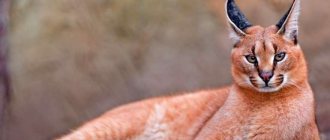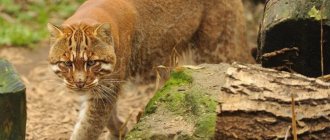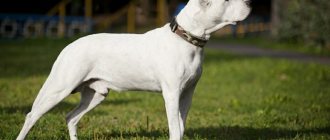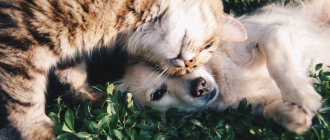On the first day of spring, March 1, Cat Day is celebrated in Russia. According to some reports, the holiday was first organized in 2004 by the Moscow Cat Museum and the newspaper “Cat and Dog”. Interestingly, many countries also have national days to honor these animals. For example, in the USA it is October 29, in Poland – February 17, in Japan – February 22. And the basis for all national Cat Days was World Cat Day, celebrated on August 8th.
The cat family belongs to the class of mammals, the order of carnivores. All cats - from the small domestic cat to the large Amur tiger - are excellent hunters. The first cat-like mammals appeared about 60 million years ago, during the Eocene era. The evolution of true cats began about 40 million years ago. Modern felines are divided by genera into cheetahs, caracals, catopumas, tiger cats, servals, lynxes, marbled cats, Asian cats, golden cats, pumas, clouded leopards, panthers and just cats, which also includes the domestic cat, a subspecies of the forest cat. The fauna of Russia includes such felines as the Far Eastern forest cat, manul, jungle cat, forest cat, common lynx, Amur tiger, Far Eastern and Central Asian leopards, snow leopard and caracal.
The Russian Geographical Society is engaged in the conservation and study of rare feline species: the Amur tiger, the Far Eastern leopard, the snow leopard, the manul and the lynx.
Amur tiger
The Amur tiger is one of the largest land predators on our planet: the body length of males reaches 220 cm, weight - 185 kg. It is also one of the smallest subspecies of tiger - about 550 individuals live in the wild. 95% of the entire population lives in the Russian Far East and 5% in China. In Russia, the Amur tiger population is concentrated in the Primorsky and Khabarovsk Territories, the Amur Region and the Jewish Autonomous Region. 20% of the Russian habitat is in nature reserves, national parks and sanctuaries - a special protection regime has been established here and animals can feel safe. The remaining 80% are hunting grounds, where the Amur tiger has to compete with hunters for ungulates. The Amur tiger is listed in the Red Book of the International Union for Conservation of Nature (IUCN) and in the Red Book of the Russian Federation.
svetlana-sutyrina-amurskiy-tigr-2.jpg
Amur tiger. Photo: Svetlana Sutyrina
Interesting Facts
- The Amur tiger lives in low mountains, preferring river valleys and wide valleys between ridges, covered with forest.
- The tiger is omnivorous. He can eat both a frog and a bear. However, in the wild, Amur tigers prefer to feed on ungulates: deer, wild boar, roe deer and musk deer. For adequate nutrition, one tiger needs about 50–70 ungulates per year. At the same time, a tiger can eat up to 35 kg of meat in one go.
- A tiger can jump 5 m upward and 10 m long.
- A tiger's tail is a kind of indicator of its mood. When the tiger is calm, the base of its tail is lowered and the end is curved smoothly upward.
- The span of a tiger's whiskers roughly corresponds to the width of its body. Thanks to its whiskers, the predator is able to determine the nature of the surface, temperature, and wind direction. The animal is guided by its whiskers when moving in the dark.
Since 2010, the Russian Geographical Society has supported the Amur Tiger project. Its goal is to study the state of the Amur tiger population and develop scientific foundations for the conservation of the animal. In 2013, on the initiative of the President of the Russian Federation, Chairman of the Board of Trustees of the Russian Geographical Society, Vladimir Putin, the Society became the founder of an autonomous non-profit organization. Its activities focus on the fight against poaching, scientific analysis of the state of the Amur tiger population and ecosystems in the animal’s range, and the organization of educational and educational events.
Far Eastern leopard
The Far Eastern leopard is the rarest subspecies of the cat family on Earth. Currently on the verge of complete extinction. According to various estimates, about 80 individuals live in natural conditions. At the same time, most of the population lives in Russia in the Primorsky Territory and a smaller part lives in China. About 70% of the rare predator's habitat is protected by the Land of the Leopard National Park. In the 20th century, the species was listed in the IUCN Red Book, the Russian Red Book, the IUCN Red List and in Appendix I to the Convention on International Trade in Endangered Species of Wild Fauna and Flora (CITES).
Breed standard in the WCF system
Body:
Medium to large, muscular, elongated, strong. The limbs are of medium length, strong and muscular. The paws are large and round. The tail is of medium length, thick, with a rounded tip.
Head:
A massive skull, slightly longer than wide, with rounded contours and a powerful, wide muzzle. Profile with an easy transition. The neck is long and powerful.
Chin:
Strong.
Ears:
Small to medium sized, slightly inclined forward, with rounded tips, sometimes wildly spotted.
Eyes:
Large, oval. Set wide, at a slight angle. Any color is acceptable, except blue and aquamarine; for the snow bengal (seal lynx) - only pure intense blue.
Wool:
Short, thick, shiny, silky.
Color:
A distinct, contrasting black or brown pattern, spotted or specially marbled on a golden-orange background. The Snow Bengal (Seal Links) is a colorpoint breed. The points have the same color as the Bengal. The body is somewhat lighter, but, unlike other colorpoints, it has a shade and pattern that matches the color of the points. To non-specialists, the Snow Bengal is not similar to the Colorpoint. The description of the pattern is in the list of colors. Among the variety of colors of Bengal cats, the following are recognized: brown tabby spotted, brown tabby spotted rosets, marble (brown tabby marble), silver spotted (silver tabby spotted), silver tabby rosets, silver marble ( marble (silver tabby marble) The blue color is currently recognized by one of the international felinological systems (TICA).The melanistic color is at the stage of recognition.
Source - pitomecdoma.ru
dalnevostochnyy_leopard_rgo-dalnevostochnyy-leopard-foto_valeriy_maleev.jpg
Far Eastern leopard. Photo: Valery Maleev
Interesting Facts
- The leopard feeds mainly on ungulates, as well as raccoon dogs, badgers, and hares. The leopard does not attack livestock, but can hunt dogs.
- Typical habitats for the Far Eastern leopard are coniferous-deciduous forests of the Manchurian type. The predator prefers territories with rugged terrain, steep slopes of hills, rocky outcrops and watersheds.
- The length of males reaches 136 cm. The weight of a male reaches 60 kg.
- Each leopard has its own unique spotted pattern, thanks to which scientists distinguish these predators.
- The Far Eastern leopard is the most peaceful subspecies of leopard. Throughout history, not a single case of an Far Eastern leopard attacking a person has been recorded. Out of curiosity, young individuals can follow the tracks of a person - if they meet by chance, they do not rush to run away, but study the person with interest, without showing signs of aggression.
Character and temperament
Ocelot (cat): a complete overview of the wild breed
In nature, a cat behaves very carefully. Cameras installed in national parks do not often capture cautious animals. The miniature dimensions of this baby among the cat species do not prevent him from being an active, merciless hunter. A cat weighing 2 times less than a domestic cat without fear rushes at prey larger than itself. The rusty cat is called a born hunter. However, her predator instinct fades when interacting with humans. A tamed cat is attached to its owner and takes part in games with pleasure.
Important ! The rusty cat is a merciless hunter, in the hands of a person it becomes affectionate and harmless.
These animals hunt mainly birds
dalnevostochnyy_leopard_-_mihail_kolesnikov.jpg
Far Eastern leopard.
Photo: Mikhail Kolesnikov Since 2011, the Russian Geographical Society has supported the Far Eastern Leopard project. Its goal is to study the state of predator populations, as well as develop the infrastructure of specially protected natural areas within its range.
In order to preserve the unique natural territories of Russia where the Far Eastern leopard lives, and thus save this subspecies, an autonomous non-profit organization “Far Eastern Leopards” was established in 2011. It cooperates with the Leopardovy Nature Reserve, the Kedrovaya Pad Nature Reserve and the Land of the Leopard National Park, created in 2012.
Irbis, or snow leopard
The snow leopard, or snow leopard, is the only species of the snow leopard genus and the only large representative of the cat family that lives in the highlands of Central Asia. The habitat of the snow leopard lies in the upper and middle zone of the mountains of Central and Central Asia (Himalayas) and Southern Siberia. This range includes the territories of Russia, Afghanistan, Burma, Bhutan, India, Kazakhstan, China, Kyrgyzstan, Mongolia, Nepal, Pakistan, Tajikistan and Uzbekistan. The species is endangered. According to various estimates, about 7 thousand snow leopards live in the wild, while in Russia there are only 150–200 individuals. In the Red Book of the Russian Federation, the snow leopard belongs to category I. This predator is also listed in the Red List of the International Union for Conservation of Nature and in Appendix I of the Convention on International Trade in Endangered Species of Wild Fauna and Flora (CITES). In 2011, the state nature reserve of federal significance “Pozarym” was created, on the territory of which the reintroduction of young snow leopards is carried out.
Khao-mani
For several centuries now, people have been enjoying the close company of these amazing Thai pets. They have always symbolized good luck, longevity, wealth and were pets only in the richest families.
They have white fur and deep blue or yellow eyes. It is not uncommon to see cats with different eyes. Cats are sociable, intelligent, active and easy to train. The cost of these pets is 7000-10000 dollars.
Khao Mani is a cat breed with different colored eyes.
irbis-pixabaycom.jpg
Snow leopard. Photo from pixabay.com
Interesting Facts
- A male snow leopard reaches a length of 125 cm and weighs up to 45 kg.
- Snow leopards make dens in caves or rock crevices. Each snow leopard lives within the boundaries of a strictly defined individual territory. However, it does not aggressively defend its territory from other members of its species.
- The basis of the snow leopard's diet is mountain goats, rams, roe deer, wild boars, marmots, hares and snowcocks. Snow leopards consume plant food - green parts of plants and grass - in addition to their meat diet only in the summer.
- The snow leopard is able to cope with prey three times its mass. Usually he hunts alone, crawling up to the animal from behind shelters. When there are several tens of meters left to the potential prey, the snow leopard jumps out of its cover and quickly overtakes it with jumps of 6–7 meters.
- Snow leopards are very playful and love to wallow in the snow. They often slide down a steep hill on their back, and at the bottom quickly turn over and fall into a snowdrift on all four paws. After games or hunting, they settle down to bask in the sun.
Health
Rusty cats are very strong, resilient and stress-resistant, and have a strong immune system. They are not prone to hereditary or genetic diseases. Malaise can only be caused by insufficient exercise and poor diet.
In addition, in artificial conditions, the animal’s immunity weakens somewhat, so it must be vaccinated, following the schedule established by the veterinarian.
With proper maintenance and care, the average life expectancy of an animal is about 12 years.
irbis-mihail_semenov.jpg
Snow leopard.
Photo: Mikhail Semenov In 2010, the Russian Geographical Society supported the grant project “In the Footsteps of the Snow Leopard.” Its goal is to study the state of the snow leopard population, its numbers and age-sex structure, as well as key habitats. These data will help solve the problem of optimizing the territorial protection of this species, as well as the ecosystems of Southern Siberia as a whole. In 2012, the project “In the Footsteps of the Snow Leopard” grew into a full-scale project “Wild Cats of Southern Siberia” to study and preserve rare species of cats in the south of Siberia - snow leopard, manula and lynx.
Manul
The Pallas's cat is a predatory mammal of the cat family, one of the least studied wild cats in the world. Pallas's cat is widespread in Central and Middle Asia, from Southern Transcaucasia and Western Iran to Transbaikalia, Mongolia and Northwestern China. Within Russia, Pallas's cat is found in the Chita region, Buryatia, Tuva and Altai. Included in the Red Books of the Russian Federation, the Trans-Baikal Territory, as well as the republics of Tyva and Buryatia. Manuls can be seen in the Sayano-Shushensky, Khakassky, Daursky nature reserves. The exact number of the species is unknown due to the secretive behavior of the Pallas's cat and the patchy nature of its distribution. Pallas's cat is listed in the Red Book of the Russian Federation, the IUCN Red List and Appendix II of the CITES Convention.
Family of rodents listed in the Red Book of Russia
Mammals whose distinctive feature is the presence of an upper and lower pair of incisors. Because of this special structure of the teeth, the name was obtained - rodents. The most numerous order, including more than two thousand species. They have the ability to live comfortably in different climatic conditions.
Tarbagan
It has a name like the Mongolian or Siberian marmot. One of the largest among the rodent order. Body length up to sixty centimeters. It has fur of an interesting sandy-yellow color with dark ripples.
A distinctive feature is the presence of darkening on the top of the head, in the form of a black-brown “cap”. They settle in colonies near meadows and mountain ranges. It is believed that its fat and bile have healing properties, which is why they began to be killed en masse.
Black-capped marmot
A rare species. The population is at the stage of extinction. The population of the species is likely to be affected by climate change. Mainly the habitat is the Transbaikalia region. The length of the body reaches sixty centimeters.
River beaver
They live in a limited habitat in the region of Western Siberia. The beaver's body is baggy and quite massive. They reach a length of up to one hundred and thirty centimeters. The front and hind legs have five toes.
The hind legs have a swimming membrane. Color with a reddish tint. Life expectancy is approximately twenty years.
Speckled gopher
A species of rodents of the gopher genus of the squirrel family. One of the small individuals of gophers. It has a body length of up to twenty-five centimeters.
A distinctive feature is the color of the fur. The back is bright gray-brown with whitish speckles. They live in the southern forest-steppes of the East European Plain.
Dormouse garden
The animal got its name because it spends time in hibernation from autumn to spring. Leads a nocturnal lifestyle. The animals were massacred. They are believed to carry all sorts of infections. One of the oldest populations among rodents. Outwardly they resemble a gray mouse. The body length is up to a maximum of fifteen centimeters. Body weight is approximately one hundred grams. A long, thin tail up to thirteen centimeters, almost the length of the entire body.
At the end, the wool is gathered into a fluffy brush. The paws are uneven. The front legs are much shorter than the hind legs. They have a color from gray to brown. Young animals have fur with a brighter color contrast. Habitat: mostly forests, may live in abandoned gardens in northern Russia.
manul2-evgeniy_mazurin.jpg
Manul. Photo: Evgeny Mazurin
Interesting Facts
- The Pallas cat looks like a typical small cat, similar in size to its domesticated relatives. The body length of males reaches 65 cm, weight can reach up to 6 kg.
- The animal does not know how to run fast, so it escapes from enemies by resorting to hiding, in which protective coloring helps it, or by hiding in a shelter - a narrow niche, hole, on a rock, on a tree.
- Pallas's cat feeds mainly on pikas and rodents: gerbils, voles, ground squirrels, hamsters, as well as partridges and chukars. Sometimes it catches young marmots, tolai hares, and small birds. The Pallas's cat obtains food mainly from ambush, lying in wait for a long time for the victim at the entrance to the hole. The main trump cards of predators are long, motionless hiding and lightning-fast throw.
- It is difficult for Pallas' cats to live in places with high snow cover. For a cat, even 20 cm of snow is already a disaster.
- The Pallas cat received its second name - the Pallas cat - in honor of the Russian and German naturalist Peter Simon Pallas, who first gave a scientific description of this species on the coast of the Caspian Sea in the 18th century.
Small cats - record holders
Tinker Toy The title of the smallest cat in the world was given to a pet named Tinker Toy, who was included in the Guinness Book of Records at the age of 2.5 years. At that time, he weighed only 681 g. The body length of this tiny animal was 19 cm, and the height was 7 cm. The baby lived in the USA in the family of Scott and Katrina Forbes. He died at the age of 6 years.
Mr. Peebles and the guinea pig
Another record holder is Mr. Peebles. The cat entered the Book of Records in 2004. The pet weighed 1.3 kg and its body length was 15 cm. Its first owner was a farmer who lived in Illinois. However, the cat was later taken by veterinarian Donna Sussman, since living conditions on the farm were difficult for such a baby. It was at the clinic that it turned out that Mr. Peebles was an adult cat, and not a kitten, as the doctors thought. His dwarfism is the result of a gene mutation.
manul-evgeniy-mazurin.jpg
Manul. Photo: Evgeny Mazurin
Lynx
Lynx is a genus of predatory mammals of the cat family, closest to the genus of cats. It lives in Russia, Scandinavia, Finland, some areas of Poland and the Czech Republic, as well as in Spain. In Russia it is found in dense, overmature coniferous forests from the western borders up to Kamchatka and Sakhalin. The lynx is included in Appendix I of the Convention on International Trade in Endangered Species of Wild Fauna and Flora (CITES) and in the list of endangered animals of the international Berne Convention. This rare, endangered species is also present in the Red Data Books of Belarus, Kazakhstan and 17 constituent entities of the Russian Federation.
rys_-_dmitriy_vahrushev.jpg
Lynx. Photo: Dmitry Vakhrushev
Interesting Facts
- The body length of a male lynx reaches 106 cm, weight – up to 30 kg.
- The lynx is very dexterous: it not only climbs trees and rocks well, but also runs quickly, makes large jumps up to 3.5–4 m, makes long treks, and swims well.
- The objects of lynx hunting are hares, roe deer, musk deer, chamois, aurochs, various birds, rodents, as well as young deer, wild boar, and elk. Hunting through deep snow and crust, the lynx defeats large adult animals.
- The lynx does not touch humans; only a few facts are known that indicate how a wounded lynx attacked people. In her usual state, when meeting a person in the forest, she tries to hide and not show her presence.
- Thanks to the tufts on its ears, the lynx has incredible hearing; it can hear a person’s steps several kilometers away.
Interesting facts about the animal
- On the territory of modern Russia, the cat was domesticated approximately 2,700 years ago.
- The wild cat lives at an altitude of 2500-3000 m above sea level. The mountainous region is the most convenient place for an animal to live.
- The animal prefers to sit in ambush and attack the victim suddenly. But he catches a hare without any problems.
- Wild cats spread thanks to the Roman conquerors. They began to interbreed with wild cats. When Roman troops conquered Britain, these animals began to be used not only to protect outbuildings from mice, but also as fighting animals. There were times when the value of a cat exceeded the value of a bull.
- Nowadays you can buy a real forest cat. They are bred in special nurseries. The price of such an individual ranges from 10 to 50 thousand rubles. The cost depends on the purebred and external characteristics.
Still have questions about the wild cat or have something to add? Then write to us about it in the comments, this will make the material more useful, complete and accurate.
rys-dmitriy-vahrushev.jpg
Lynx.
Photo: Dmitry Vakhrushev In 2012, the Russian Geographical Society grant project “In the Footsteps of the Snow Leopard” grew into a full-scale project “Wild Cats of Southern Siberia” for the study and conservation of rare cat species of southern Siberia - snow leopard (irbis), manula and lynx. The project is aimed at increasing the effectiveness of environmental protection measures in specially protected natural areas of Southern Siberia - these are the Khakass and Sayano-Shushensky nature reserves, the Ubsunurskaya Kotlovina state nature reserve and the Pozarym state nature reserve of federal significance. Among the objectives of the project are studying nutrition, monitoring the food supply and conducting a zoological and veterinary examination of natural populations of wild cats, as well as increasing the level of public knowledge about the need and importance of preserving rare species of animals.
Author: Anna Sokolova











